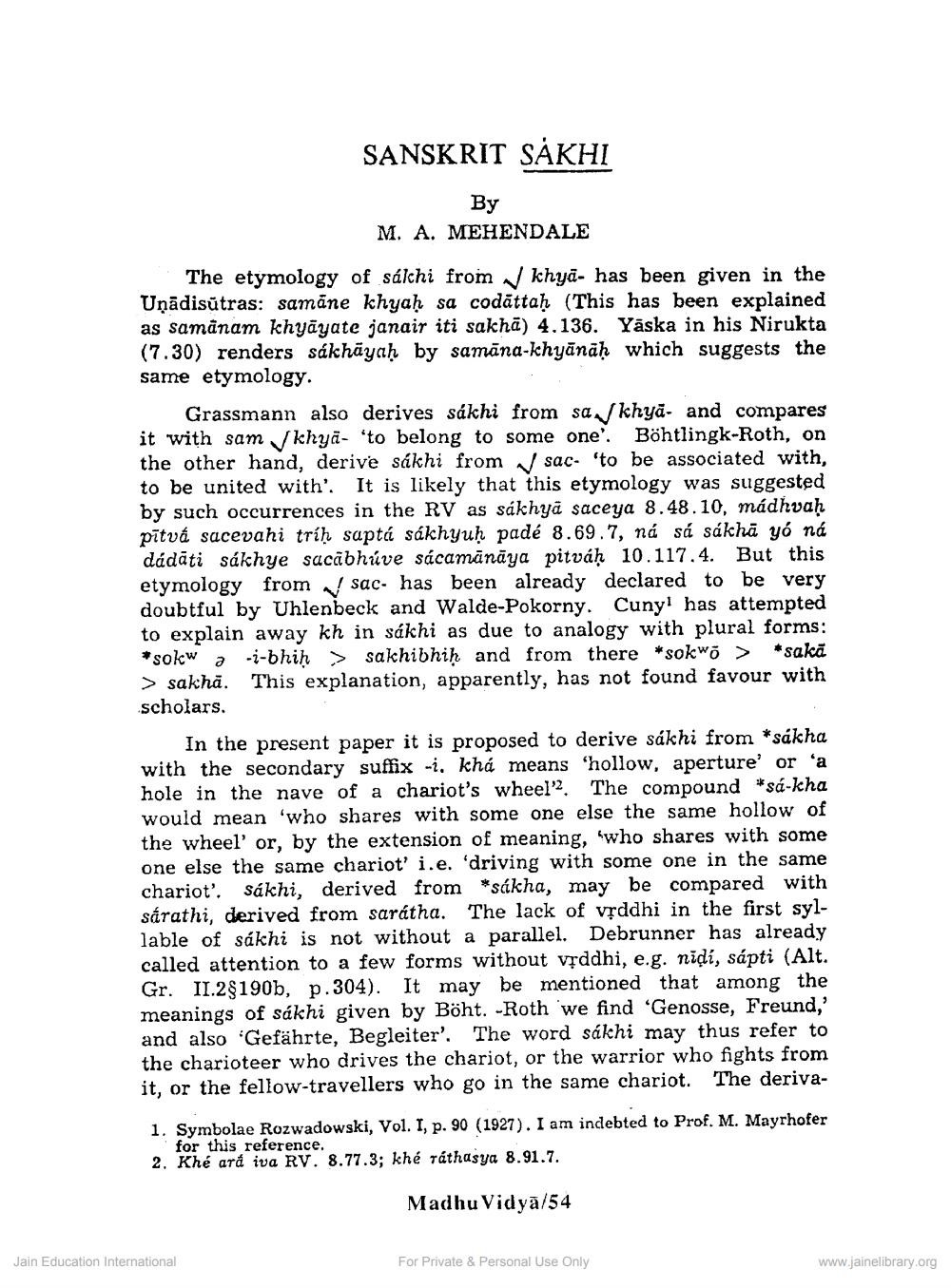________________
SANSKRIT SAKHI
By
M. A. MEHENDALE
The etymology of sálchi from khya- has been given in the Uņādisutras: samāne khyaḥ sa codattah (This has been explained as samanam khyāyate janair iti sakhā) 4.136. Yaska in his Nirukta (7.30) renders sákhāyaḥ by samāna-khyānāḥ which suggests the same etymology.
Grassmann also derives sákhi from sa khyā- and compares it with sam khya- 'to belong to some one'. Böhtlingk-Roth, on the other hand, derive sakhi from v sac- 'to be associated with, to be united with'. It is likely that this etymology was suggested by such occurrences in the RV as sákhyā saceya 8.48.10, madhvah pītvá sacevahi triḥ saptá sákhyuh padé 8.69.7, ná sá sákhã yó ná dádāti sákhye sucābhuve sácamānāya pitváḥ 10.117.4. But this etymology from v sac- has been already declared to be very doubtful by Uhlenbeck and Walde-Pokorny. Cunyi has attempted to explain away kh in sákhi as due to analogy with plural forms: *sokew a -i-bhiḥ > sakhibhiḥ and from there *sokwo > *sakā > sakhā. This explanation, apparently, has not found favour with scholars.
In the present paper it is proposed to derive sakhi from *sákha with the secondary suffix -. khá means 'hollow, aperture' or 'a hole in the nave of a chariot's wheel. The compound *sá-kha would mean 'who shares with some one else the same hollow of the wheel' or, by the extension of meaning, who shares with some one else the same chariot' i.e. 'driving with some one in the same chariot'. sákhi, derived from *sákha, may be compared with sárathi, derived from saratha. The lack of vệddhi in the first syllable of sákhi is not without a parallel. Debrunner has already called attention to a few forms without vệddhi, e.g. niời, sápti (Alt. Gr. II.2$1906, p. 304). It may be mentioned that among the meanings of sákhi given by Böht. -Roth we find 'Genosse, Freund,' and also "Gefährte, Begleiter'. The word sákhi may thus refer to the charioteer who drives the chariot, or the warrior who fights from it, or the fellow-travellers who go in the same chariot. The deriva
1. Symbolae Rozwadowski, Vol. I, p. 90 (1927). I am indebted to Prof. M. Mayrhofer
for this reference. 2. Khé ará iva RV. 8.77.3; khé ráthasya 8.91.7.
Madhu Vidyā/54
Jain Education International
For Private & Personal Use Only
www.jainelibrary.org




